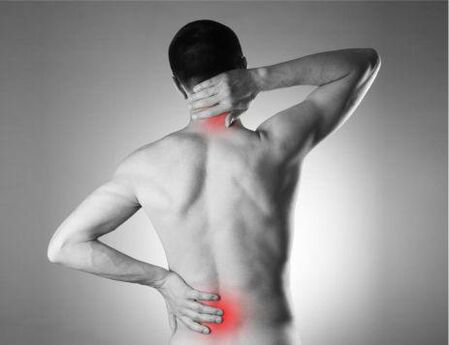With osteochondrosis, the structure and function of the intervertebral discs are altered, which offer flexibility and mobility to the spine.As the disease intensifies, irreversible changes arise themselves in the vertebrae.

The causes of osteochondrosis are internal (endogenous) and external (exogenous).
Endogenous reasons include:
- violation of intrauterine development of the spine,
- Hereditary predisposition and age -related changes in cartilage.
The main exogenous cause of osteochondrosis is the incorrect distribution of the load on the spine, which leads to a change of cartilage in excessive pressure places.
Drop the disease:
- trauma of the spine,
- Infections,
- Weaken the back muscles,
- Lateral S -shaped curvature of the spine,
- Drug weight
- a long retention of an uncomfortable posture.
Osteochondrosis can develop not only in people with poor posture engaged in mental work, but also those which are well trained physically.
In addition to the mechanical reasons for the development of osteochondrosis, they also lead to:
- Metabolic disorders (mainly calcium and phosphorus),
- Lack of trace elements and vitamins (magnesium, manganese, zinc, vitamin D),
- The hereditary predisposition plays a fairly important role.
When you lift weights, jumps, falls, static loads, intervertebral disc micro-labels appear.If this happens systematically, the damaged intervertebral discs lose their elastic properties over time, expand and the distance between the vertebrae decreases.And this means that the nerve roots extending from the spinal cord are tight, pain occurs.At the same time, swelling appears in the clip of neurovascular beam, which causes even greater counterfeit and increased pain.If the intervertebral disc has already started to collapse, it ceases to amortize, is even more injured and, gradually, the spine loses its flexibility.
The main sign of osteochondrosis is pain.Depending on where the damaged intervertebral discs are located, they can hurt: neck, shoulder, arms, back and even chest.Sometimes a person thinks that he has heart problems, but in fact, it hurts a compressed nerve due to osteochondrosis.Simultaneously with pain, a person often feels on pressure and numbing of the muscles.If the blood vessels that feed the brain are in a hurry, headache, dizziness, noise in the ears, double eyes, nausea and vomiting, fainting appear.
You must contact these complaints to the neurologist.He will examine the spine, will check how things are with brain circulation and, if necessary
Treatment of osteochondrosis is a long process that requires a person with great will and free time.To date, there are many methods of fighting disease: medicine, manual therapy, traction, massage and therapeutic gymnastics.
Advice for the prevention of radiculitis and osteochondrosis:
- Perform a timely correction of the spine curvature and posture disorders in early school age.
- Actively engage physical education, which will allow you to form a muscle corset.
- Adhered to a diet, consuming products with a sufficient content of vitamins, calcium and magnesium (fish and other gifts from the sea, cabbage, spinach, beans, nuts, seeds, peas, coarse bread and fresh milk).
- Fight for an excess weight.
- When you wear weights, make sure a uniform load on both hands, carrying backpacks instead of bags.Lift the weights only with the use of the legs, not the spine.


















